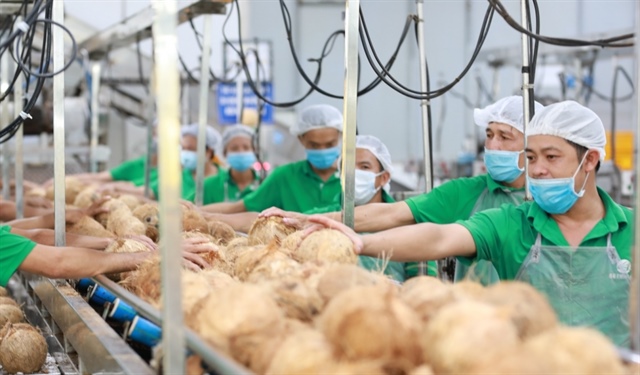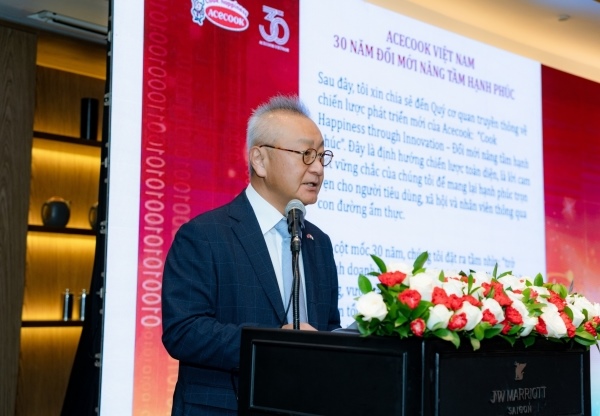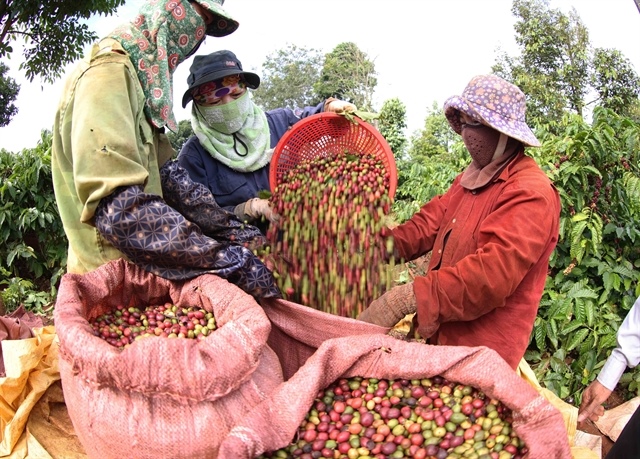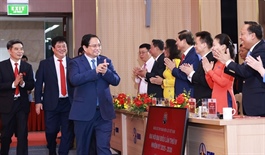Mixed fortunes likely from US tariff fallout
Mixed fortunes likely from US tariff fallout
Although the decision of the United States to impose new tariff levels on Vietnam is not as harsh as the rates suggested in April, they may still pose various challenges for Vietnamese exporters as well as economic growth.

Vietnam’s textiles must ensure transparent supply chains, or risk being taxed as transshipped goods, Le Toan |
On August 7, the new US reciprocal tariffs officially took effect for many nations, with some of those worst-hit still attempting to scramble together a fresh deal.
For Vietnam, under the new policy, goods originating from Vietnam will be subject to a 20 per cent tariff.
The order from US President Donald Trump specified that any goods determined to have been transshipped from a third country to evade higher tariffs will be subject to an additional 40 per cent import duty, but his administration has released few details on how these goods would be identified, or how the provision would be enforced, reported Reuters last week.
Experts note that although the 20 per cent tariff on Vietnamese goods is higher than that of some Southeast Asian countries such as Thailand, Cambodia, Indonesia, Malaysia, and the Philippines (all at 19 per cent), the difference could be fairly negligible as Vietnam leads the region in export value to the US.
That difference was deemed “insignificant” in changing the region’s landscape for trade with the US, given Vietnam’s capacity and efficiency, according to Permata Bank chief economist Josua Pardede last week.
“The 1 per cent gap was too small to fundamentally change trade patterns, since competitiveness was not solely driven by tariffs but also by production efficiency, logistical costs, product quality and business ties,” he said.
“Vietnam still enjoys a strong market position, particularly in the electronic industry, textiles and footwear. Such a small tariff difference is possibly not big enough to directly shift trade volumes from Vietnam to other ASEAN countries in a meaningful way in the short-term,” added Pardede.
Despite that, the Ministry of Finance (MoF) estimated that a 1 per cent decline in US exports could reduce Vietnam’s GDP by around 0.08 per cent. These figures are expected to be recalculated in light of recent developments to formulate appropriate solutions, mitigate tariff impacts, and expand export markets.
While Vietnam still holds many advantages in both trade and foreign investment, recent global developments suggest that risks are entirely possible.
The MoF reported to the government that the increasing frequency, intensity, and complexity of global shocks, particularly US tariff policy and geopolitical tensions, are affecting global exports, trade flows, oil prices, and transportation. Vietnam is not immune, and anticipating risks for timely policy response is critical.
Nguyen Chanh Phuong, vice chairman of the Handicraft and Wood Industry Association of Ho Chi Minh City, stated that as of June, the US accounts for 56 per cent of Vietnam’s total wood and wood product exports. Despite the tariff adjustments, the US remains one of the fastest-growing markets, with export growth of 11.6 per cent.
“Wood processing and export enterprises can remain calm, as Vietnam’s wood sector has significant advantages in raw material sources, production costs, and skilled labour,” he said.
Thanks to strong internal capacity, even when the US imposed a minimum 10 per cent tariff, the wood industry maintained stable order volumes, Phuong added.
“Businesses negotiated with buyers to share the additional tax burden using a cost-sharing formula split between manufacturers, importers, and consumers to balance interests and maintain long-term partnerships,” he continued.
The US remains Vietnam’s largest and most strategic export market. Textiles are one of Vietnam’s top three export groups to the States, along with computers/electronics and machinery/parts. The textile and garment sector also employs around three million workers, accounting for one-quarter of Vietnam’s industrial manufacturing workforce.
Nguyen Xuan Linh, COO of clothing group SCAVI, said that textile producers expected a lower tariff rate, given the negotiation process and the supply chain relationship between the two countries.
“Vietnam’s textile industry does not compete directly with US domestic production. A 20 per cent tariff is not terrible compared to other countries that face similar or higher rates, but it will increase all costs and product prices, weakening market demand,” he said.
From a tax standpoint, Vietnam is better positioned than China or India, and roughly on par with Bangladesh - Vietnam’s main competitors in this space, Linh added.
Moreover, Vietnam must ensure transparent supply chains and rules of origin compliance, or risk being taxed as transshipped goods. Textile input materials are highly diverse, and Vietnam has only localised about 50-60 per cent.
“Vietnam has potential to engage more investment and is encouraging the construction of input-material manufacturing plants to raise the localisation rate and meet rules of origin standards. However, it takes at least 2–3 years to build and operate such plants, a challenging timeframe for many businesses,” Linh said.
The Ministry of Industry and Trade said it would continue to discuss the situation with the US and aim to complete a full agreement on reciprocal trade based on the principles of openness, constructiveness, equality, mutual benefit, and consideration of each other’s development level.
- 13:00 12/08/2025



























